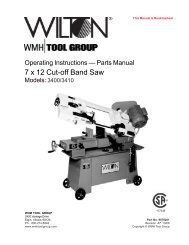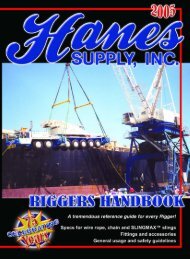Continental L-Head Overhaul Manual - Igor Chudov
Continental L-Head Overhaul Manual - Igor Chudov
Continental L-Head Overhaul Manual - Igor Chudov
You also want an ePaper? Increase the reach of your titles
YUMPU automatically turns print PDFs into web optimized ePapers that Google loves.
Page 8 CONTINENTAL L-HEAD ENGINE MANUAL<br />
L-<strong>Head</strong> engines have inherent design advantages<br />
which result in a more simple engine of lower<br />
height, weight and cost. All valves, cams, valve<br />
lifters and all other moving parts are a part of the<br />
cylinder block assembly.<br />
The cross-section of an L-<strong>Head</strong> engine resembles<br />
the letter "L" written upside down and engines<br />
with this type of combustion chamber are<br />
also called side-valve engines.<br />
SECTION 1<br />
GENERAL INFORMATION<br />
Intake and exhaust valves are located in the side<br />
pocket and both are directly operated through tappets<br />
from a single camshaft. This provides a sireple<br />
and heavy duty valve gear, since there is no<br />
deflection. Figure 10 ~ L-head design<br />
CONTINENTAL L-HEAD ENGINES<br />
<strong>Continental</strong> has eight basic four-cylinder and<br />
ten six-cylinder L-<strong>Head</strong> type engines, ranging in<br />
size from 56 to 427 cubic inch displacement.<br />
The combustion chamber design has been tailored<br />
for the required turbulence, charge flow and<br />
burning characteristics to provide dependable and<br />
economical heavy duty service.<br />
Some of the principal design features are:<br />
1. Individual Porting -- of the intake manifold<br />
whereby each cylinder is fed with the fuel-air<br />
mixture individually and not influenced by other<br />
cylinders of the engine.<br />
This is accomplished by casting the cylinder<br />
block with individual intake valve passages for<br />
each cylinder and connecting these passages to an<br />
intake manifold which also has individualized passages<br />
for each cylinder.<br />
This equal distribution results in maximum<br />
power, smooth operation, easy starting and longer<br />
engine life.<br />
Figure 1 1 ~ Individual Parting
















